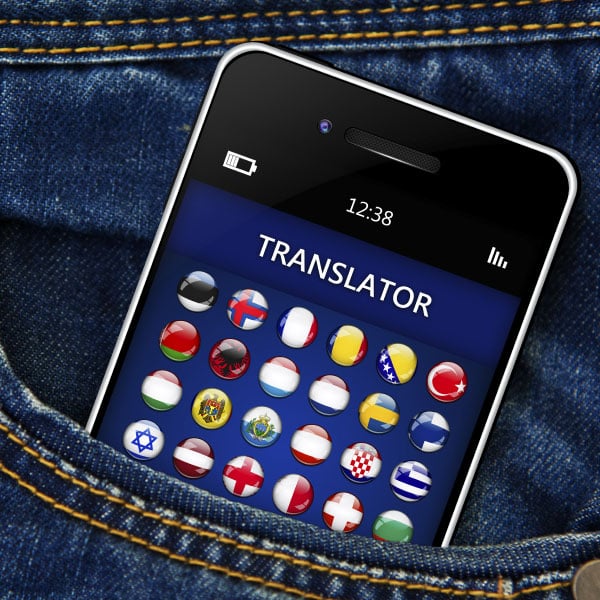ARTIFICIAL INTELLIGENCE COMPARTED TO A TRANSLATOR – COOPERATION, NOT COMPETITION
With the ever-increasing development of large language models, innovation in the translation sector is not lagging behind. In recent years, significant progress has been made in the field of artificial intelligence (AI), whose tools can now be used by all of us not only to create content, but also to translate it. However, while AI translation tools have certain advantages, there are also significant drawbacks. In this article, we will look at the strengths of AI and the translator, and discuss whether there is a future for translation without human involvement.
MAN AGAINST MACHINE: WHO WILL TRANSLATE BETTER?
When considering the advantages and disadvantages of translators and machine translation, it is worth looking at the different situations that may be encountered. Each company has its own needs, so the view on the most appropriate solution can vary considerably.
Below are some of the more significant factors that can tip the scales either way in the choice between human and computer generated translation.
Unravelling cultural differences
Where there are two people, there are three opinions. Similarly, the cultural characteristics of each country and language could be described. What seems obvious in one may cause not only astonishment but also indignation, resentment, resentment in another. For example, large language models are still trained 90% of the time with English content, and of course this has an impact on how the large language model produces and translates a text into Latvian, Estonian or Somali.
For example, the same joke expressed word for word in two different languages can cause confusion. It is true that jokes and expressions are often similar in different languages, but in each culture there may be slight nuances that make it more understandable. In a talk show, where the participants do not have much time to think carefully about each word, a comparison may slip through in a different format, which viewers or listeners might well forgive, but in writing – especially in marketing materials, product descriptions or instructions for use – not so much.
A successful translation is one that is so appropriate that it is almost impossible to tell whether the message was originally written in another language. Its content and facts are reliable and verified. At the moment, artificial intelligence is not doing this as well or as well as an experienced translator – especially if the tool used is not specially trained to recognise and adapt expressions in a way that is understandable and acceptable to the target audience. If this is done without adaptation, it is possible to obtain a variety of new expressions that do not exist. In order to combat non-existent/correct new words, as well as common linguistic mistakes made not only by machine translators, who are trained with a wide variety of texts that are not always correct, but also by society in general, we are publishing Latvian language tips that are not only useful in everyday communication, but will also have a very positive impact in the business environment.
Understanding the context and the big picture
AI translation is based on a contextual approach, analysing large amounts of information in order to be able to reproduce it in a logical and comprehensible way. In essence, AI is like a smartphone keyboard’s next-word predictor, lightning-fast calculating which word might be used next in a given context.
Therefore, most often, AI translation tools translate at sentence level, transferring meaning from one language to another, without taking into account the context at the level of the whole text or document This is why it is often the case that AI does not follow consistency, uses a lot of synonyms that interfere with the comprehension of the text, and that you may also encounter so-called AI “hallucinations” – false or inaccurate information generated by AI that is very convincingly presented by AI as true, even though it is illogical and/or incorrect and without careful additional research and source checking, AI users will not even notice it, but readers will!
When the AI is confronted with complex texts on topics that are not included in the training model, because in most cases large language models are trained on past data, there is a possibility of not fully “reading” the context and making mistakes. An experienced translator – especially an expert in his/her field – assesses the subject matter, the context of the text, which may change parts of the content significantly, before translating. This is particularly important in marketing and legal material, where even a few words can change the whole meaning and thus the legal implications.



COST/QUALITY RATIO
Like every service and product, translation can be high quality, cheap or fast, but only rarely will the three be in one place. In the pursuit of high quality, the price goes up. Looking for ways to get cheap and fast translations can lead to a drop in quality. Conversely, if there is a need for a fast and high quality translation, the price may go up.
This relationship was clearly observed many years ago. Now, thanks to artificial intelligence and the translation tools available to translators and translation agencies, the boundaries between quality and speed are diminishing, but not in all cases, because it is hard to imagine how AI would be able to experience and describe your new product, to put into words the unique experience you had abroad.
Expert insight costs more
Over time, each translator specialises in one or more topics, passing the source language through the prism of their own experience. By taking the time to research specific fields, expert translators do not have to look far for a translation of the terms in the target language. Such translators also adapt the sentences and their layout so that the target language text is not only logical but also enjoyable.
The translator also adapts to the needs of each business partner, the client, so that the translation fits the company’s brand and style. With AI, this is much more difficult, as the tool would then have to be specially trained with complex instructions that the computer may forget after a while, or even ignore from the start.
Efficiency at the expense of quality
In large-scale projects – especially in documents where parts of the text are often repeated – artificial intelligence, specifically translation tools, can be a useful tool. On a similar principle, for many years now, various translation or CAT tools have been used to translate such material, where terms and even repetitive sentences are already automatically translated, saving considerable time and resources and ensuring that consistency is maintained from text to text.
Machine translation is not a new invention by definition: it has been discussed since the 17th century. However, by adding artificial intelligence to the process, the quality of the resulting translation is significantly improved.
Machine translation, even with the involvement of AI, is of a higher quality, but far from perfect. This could be used to translate texts for internal company communications, such as process documentation, as well as for various standard documents – standard contracts, advertisements, summonses. However, in all of these examples, it would be useful to apply a hybrid model of translation, so that the material does not contain significant factual or even logical errors – in the spelling and rendering of names, surnames and patronymics, names of institutions, etc.
HYBRID MODEL – COMBINING THE STRENGTHS OF THE TRANSLATOR AND AI
Thanks to the AI’s carefully designed algorithms, which significantly improve the quality of machine translation, it is possible to reduce costs by choosing a hybrid model involving both the AI (machine translator) and the translator.
The basic principle of hybrid translation is simple: initially the text is translated by the AI, but then any errors of style or fact that occur are corrected by a knowledgeable and skilled translator. In this way, it is possible to reduce costs while maintaining the same high quality bar.
Similarly, machine post-editing can be carried out in different ways, if necessary, at light and full levels, each of which can be used on a case-by-case basis.
If the translated text is to be used only in-house, machine translation can be sufficient, quickly reviewed by a proofreader, catching AI “hallucinations” – this is often called light post-editing, which we recommend only for cases where the text is to be used for internal communication. This should not be used to publish the text to the general public, as the quality of the language is low, as it is only intended to introduce a thought/idea in the source text that is not understood by the staff. If the translation is intended for communication with clients, basic post-editing may be useful, where errors of fact, grammar, meaning and style are “caught” where necessary. On the other hand, full post-editing can be used to translate and localise marketing and print materials, where every word, comma and sentence idea counts.
Although AI technologies are advancing rapidly, the need for translators is unlikely to diminish. Situations may change, at which point higher quality text processing is needed, but in most cases AI serves as a useful tool that can be applied to the required level of quality in different situations.
In order to streamline processes and resources, it is useful to establish guidelines for assessing what level of translation quality is more appropriate in order to achieve the required quality/cost ratio.
SUMMARY
In conclusion, while AI offers promising opportunities for the translation sector, the role of the human translator is still indispensable, especially for the translation of complex and culturally sensitive texts. A hybrid model combining the strengths of AI and human translators ensures the highest quality and efficiency.
Contact us to find out more or book an online consultation to discuss how we can help you and your business get the most out of our services.
Together, we’ll come up with the right solution for your business!

The employees of Skrivanek are helpful, accommodating, and have an understanding approach to the specifics of our pharmaceutical translation tasks and translations from various language combinations. Orders are executed to a high standard in accordance with the highest professional and ethical competence and according to deadlines set.

We recommend Skrivanek Baltic as a reliable partner for any large scale projects requiring professional language services.

The employees of Skrivanek are helpful and have an understanding approach to the specifics of our translation tasks from Baltic languages. Adidas Baltic recommends other companies to use the services provided by this company.

